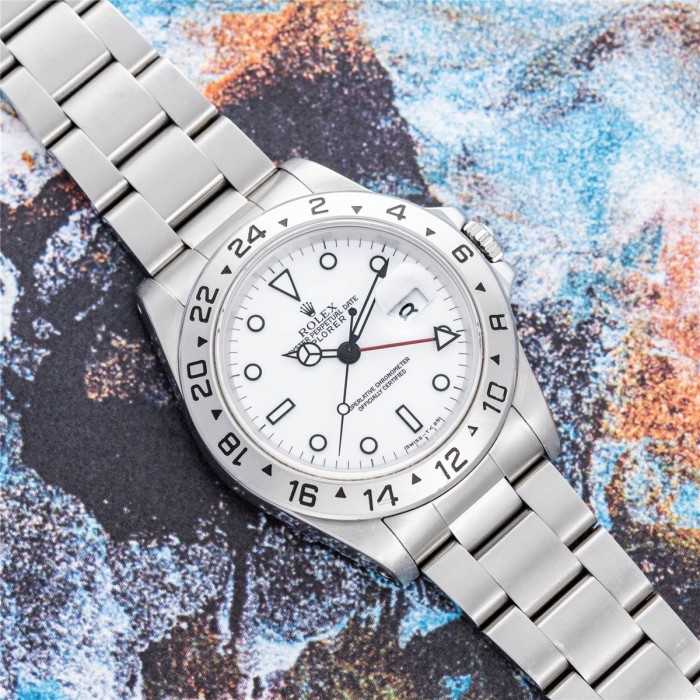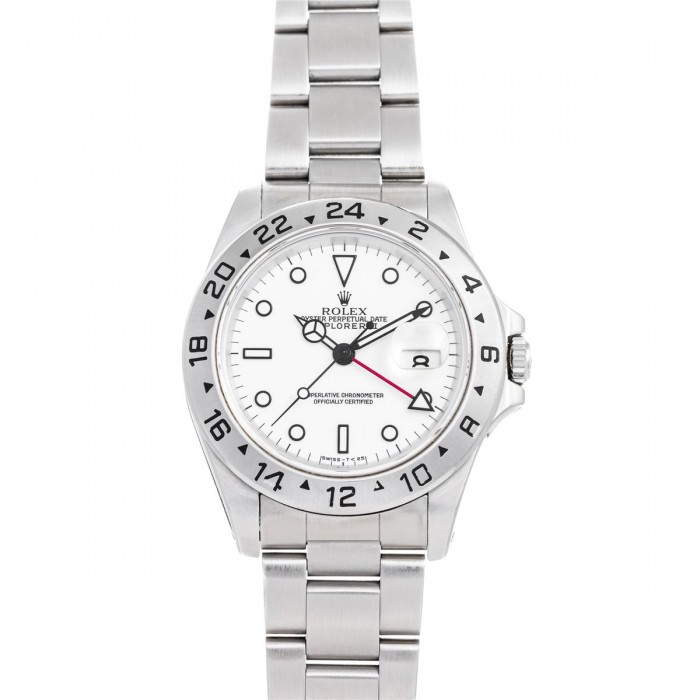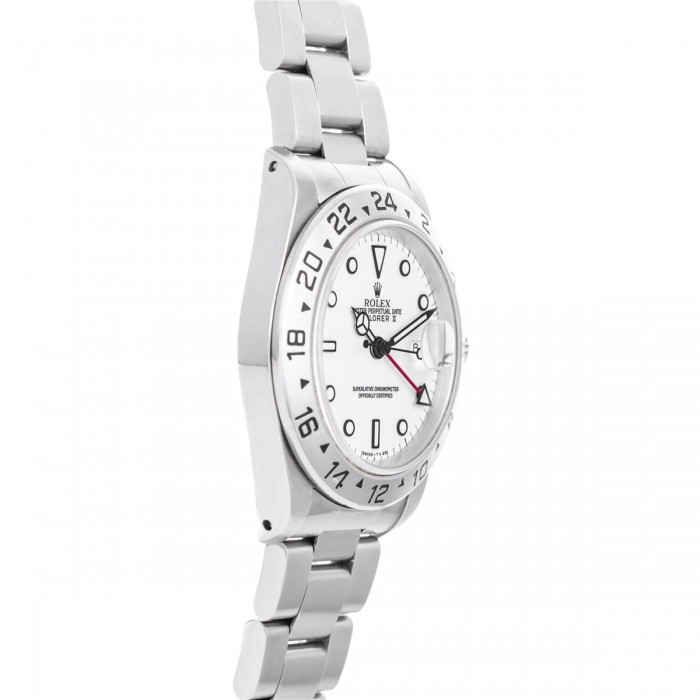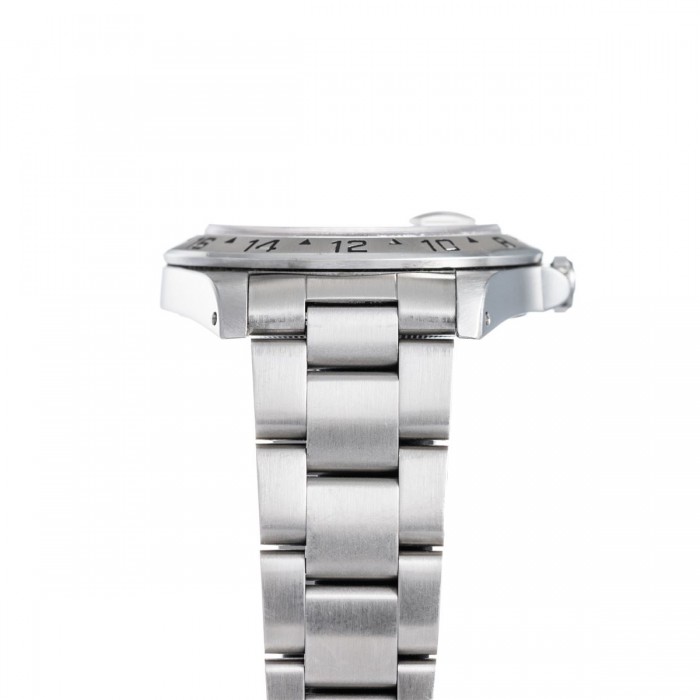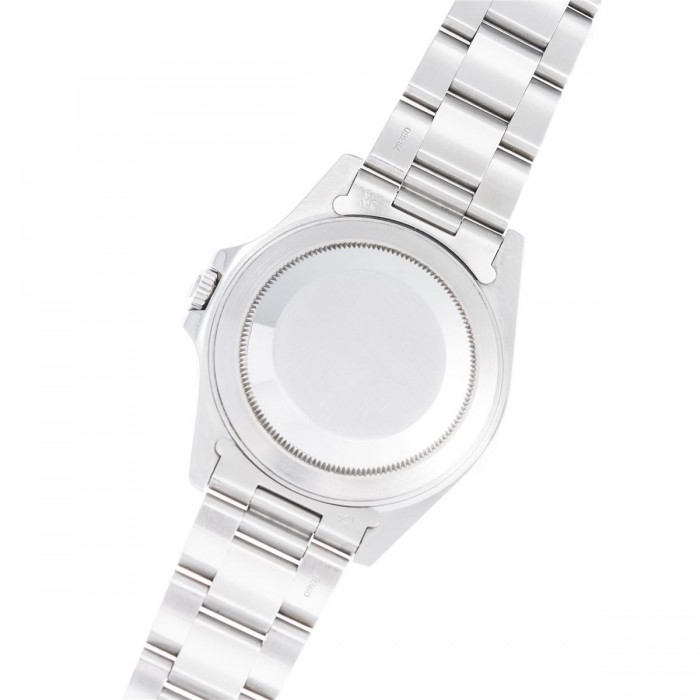Why We Love It
The Rolex Reference 16570 Explorer II is rapidly becoming a darling in the collector community.
With its unusual origin as a spelunker's tool, the Explorer II is a bit of an outlier among Rolex’s other sports watches in terms of its original intended use, but it has become one of the most revered and appreciated models in the catalog amongst collectors today.
With a diameter of 39mm, the Reference 16570 preserves the classic proportions of vintage Rolex sports watches, making them some of the very last “traditional” Rolex sports case dimensions before they swelled in more recent references.
This particular X-Serial example dates to circa 1991 and features an excellent 'holey' lug case, a flawless Tritium dial with matching handset, and a matching Oyster bracelet with a blade clasp.
If you are looking for a daily-wearable sports Rolex that preserves the classic case proportions and overall neo-vintage feel from the watches of the last century, this is the one for you!
The Explorer II Story
The Rolex Explorer II has never been accused of being staid, wimpy or dainty.
Worn by scientists and (you guessed it!) explorers into some of the more inhospitable regions on the planet, the Rolex Explorer II was from its birth designed to buck the presumptions of what a wristwatch could bear.
Rolex has long been the watch of exploration and early on, Rolex technicians subjected their timepieces to the worst Mother Nature could conjure; whether traversing the English Channel, breaking land-speed records or climbing Mount Everest, there's a good chance Rolex was involved.
The Explorer line traces its origins to the famous mountain and Sir Edmund Hillary's successful ascension of it in 1953, but numerous historic moments were marked by the presence of the Explorer and its descendent, the Explorer II. Ed Viesturs, the only American to climb all 14 of the globe's eight-thousander peaks (and the fifth person to ever do so without supplemental oxygen); Jean Troillet, the Swiss/Canadian who set the speed record for climbing the Matterhorn (at 21-years-old nonetheless) and was the first person to snowboard down Everest; and Alain Hubert, world-renowned Polar explorer who achieved a world-record cross of the Antarctic continent, all proudly wore the Rolex Explorer II on their expeditions.
The Explorer II is definitely a timepiece for the man who craves something a little different from his sport model Rolex. Released in 1971 as a follow up to the original Explorer made famous by mountaineers in the 1950s, the Explorer II utilized a larger Oyster case design more in line with the sports models already offered (the Submariner and GMT-Master). Featuring a four-hand display with a large and distinctive 24-hour pointer hand, the Explorer II was essentially a GMT-Master with one notable difference: a fixed steel bezel was installed in place of the characteristic two-tone from the aviator's model.
The reason for this fixed bezel was the target demographic: speleologists, or subterranean explorers. This hearty breed of mankind spends days on end underneath the surface of the earth and without seeing the sky, and are prone to losing track of daytime hours. The 24-hour hand would point to the appropriate place on the fixed 24-Hour bezel indicating whether it was AM or PM.
While the original Explorer was designed to go into the clouds, the Explorer II was designed to descend into darkness.

No questions about this product, be the first and ask your question.



